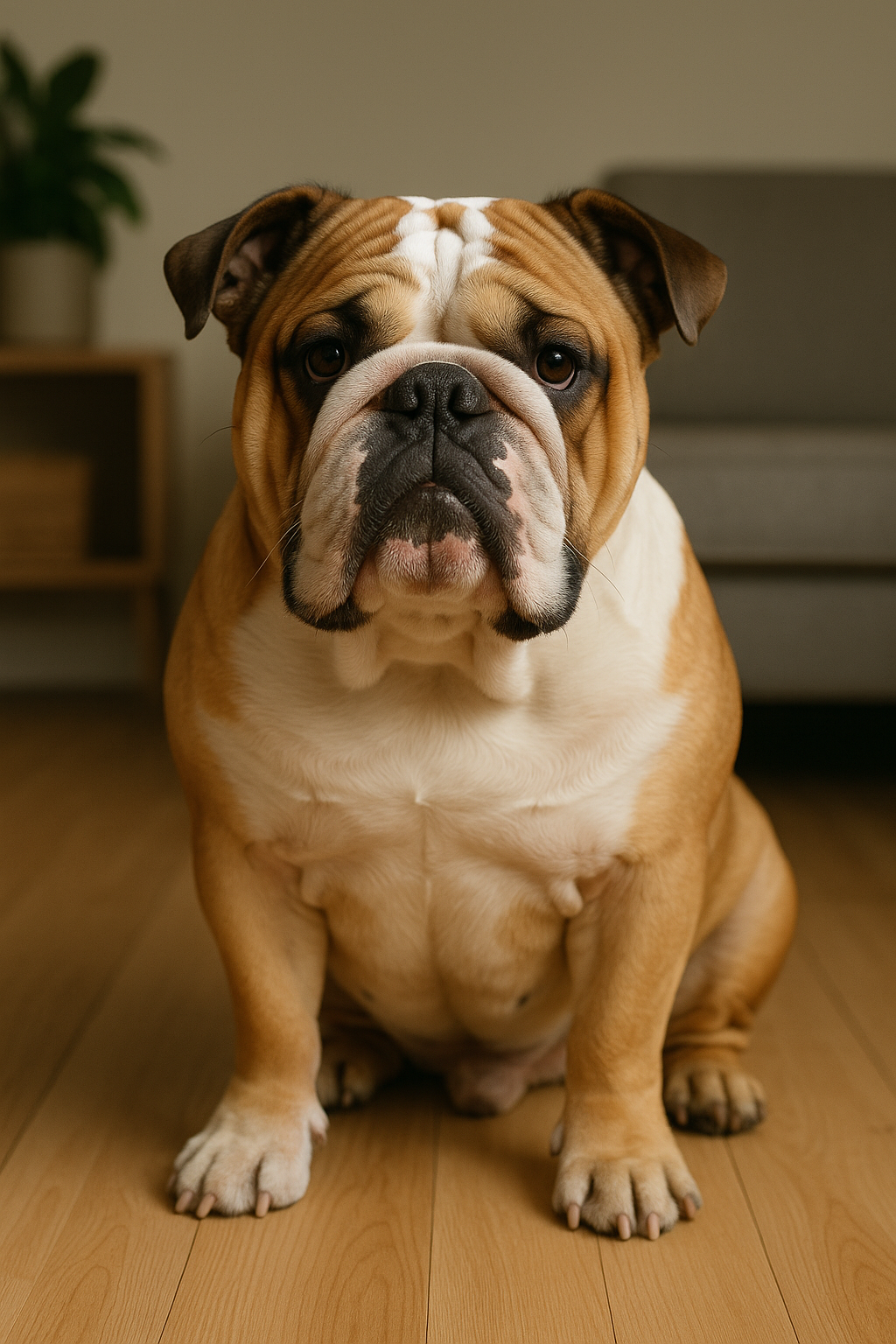Adopting a Bulldog is a wonderful experience, full of tenderness, fun moments, and lots of affection. But like any breed, Bulldogs have their own quirks and require specific care. If you’re a first-time Bulldog owner, you need to be well prepared to give them the best home possible. Below are the 10 most important tips for taking care of your Bulldog from day one.
Learn Everything You Can About the Breed
Before adopting a Bulldog, it’s essential to learn about their physical traits, medical needs, and behavior. This breed is known for its flat face, compact structure, and docile temperament, but it’s also prone to certain health issues like breathing difficulties, skin problems, heat sensitivity, and a tendency to gain weight. Understanding these aspects will help you prevent common problems and make better decisions.
Prepare a Safe and Comfortable Environment
Bulldogs love comfort and don’t need much space, but they do require a safe and quiet environment. Choose a resting area away from noise and direct sunlight. Provide a soft, properly sized bed—preferably orthopedic. Avoid slippery floors, as they can affect their joints. Have stable, accessible food and water bowls. Remove potential hazards like electrical cords, small objects, or cleaning products within reach.
Monitor Temperature Closely
One of the most critical aspects of Bulldog care is managing their sensitivity to heat. Due to their anatomy, they can’t regulate their body temperature well. Never walk them during the hottest parts of the day, avoid intense physical activity, and keep your home cool in the summer using fans or air conditioning if needed. In winter, provide blankets and warmth, as they also don’t tolerate extreme cold well. Heatstroke can be very dangerous for Bulldogs, so always watch for signs like excessive panting or lethargy.
Establish a Routine from the Start
Bulldogs respond well to routines, which give them a sense of security and stability. Feeding them at the same times, walking them on a set schedule, and designating moments for play, rest, and training will help them feel calmer and more confident. A well-defined routine not only makes training easier but also improves their behavior and emotional well-being.
Choose the Right Diet
A Bulldog’s diet must be balanced and suited to their body type. Always consult a veterinarian, but as a basic guideline, choose high-quality kibble made for medium-sized or brachycephalic breeds. Control food portions to prevent obesity, divide meals into two daily feedings, and avoid giving them table scraps. Also, be alert for food allergies, which are common in this breed. If you notice rashes, vomiting, or diarrhea, contact your vet.
Keep Facial Folds Clean
A Bulldog’s facial wrinkles collect moisture, saliva, and food particles. If not cleaned regularly, they can lead to painful infections. Wipe the folds with alcohol-free pet wipes or a damp cloth at least three times a week. Dry each fold thoroughly after bathing or cleaning. Check for redness, bad odor, or discharge. Also take care of the tail area, especially if it’s tightly curled, as it can cause similar irritations.
Be Patient with Training
Bulldogs may seem a bit stubborn, but they’re also very loyal and love to please their humans. The key is patience and positive reinforcement. Start when they’re puppies with simple commands like “sit,” “come,” or “stay.” Use treats, petting, or praise as rewards. Avoid punishments or yelling, as they can cause stress or insecurity. Keep training sessions short but consistent. Early training makes living together much easier and strengthens your bond.
Visit the Vet Regularly
Even if your Bulldog seems healthy, regular vet checkups are essential. Stay up to date on vaccinations, deworming (internal and external), weight monitoring, general physical health, and dental exams to prevent tartar buildup and infections. Bulldogs have genetic predispositions to several conditions. Prevention and early detection can make a big difference.
Give Them Time and Companionship
Bulldogs are affectionate dogs who need to be close to their family. They don’t enjoy being alone for long periods and can develop separation anxiety. Play with them daily, even if it’s in a calm way. Leave interactive toys if you’re going to be away for a few hours. Don’t leave them alone for extended periods. A happy Bulldog isn’t just one whose needs are met—it’s one who feels loved and part of the family.
Accept Them As They Are
Finally, one of the most important tips: don’t expect your Bulldog to be like other dogs. This breed has its own pace, calm personality, physical limitations—and a unique charm. They may not be the most athletic or obedient, but their loyalty and tenderness make them exceptional companions. Appreciate their unique traits and adapt to their lifestyle, not the other way around.
The Start of a Great Friendship
Being a first-time Bulldog owner means committing to caring for a truly special dog. With these tips, you’ll be well-prepared to give them a life full of well-being, love, and protection. Remember: whatever you give your Bulldog, they’ll give it back tenfold in love and loyalty. Welcome to this beautiful adventure!
